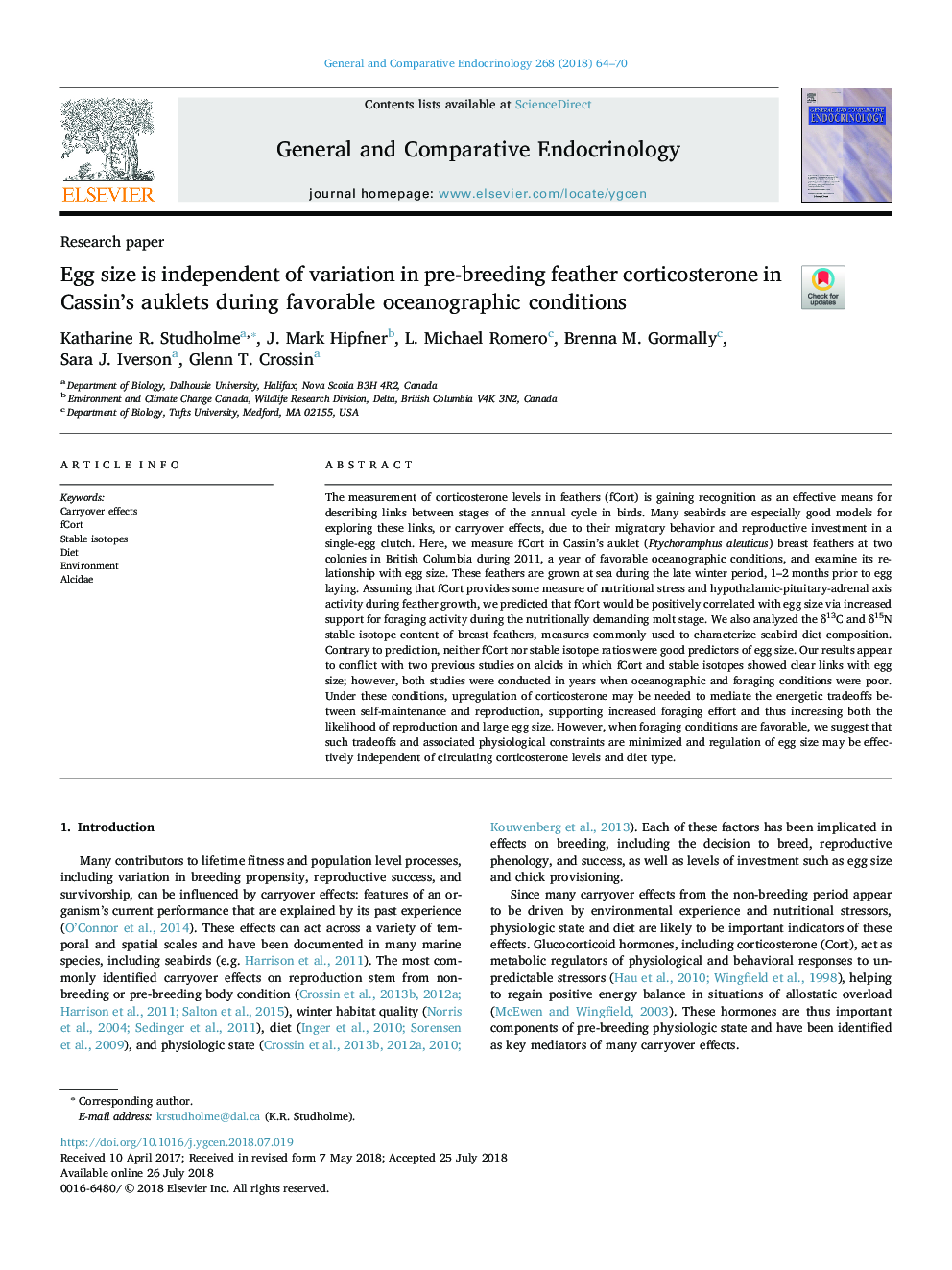| Article ID | Journal | Published Year | Pages | File Type |
|---|---|---|---|---|
| 11022670 | General and Comparative Endocrinology | 2018 | 7 Pages |
Abstract
The measurement of corticosterone levels in feathers (fCort) is gaining recognition as an effective means for describing links between stages of the annual cycle in birds. Many seabirds are especially good models for exploring these links, or carryover effects, due to their migratory behavior and reproductive investment in a single-egg clutch. Here, we measure fCort in Cassin's auklet (Ptychoramphus aleuticus) breast feathers at two colonies in British Columbia during 2011, a year of favorable oceanographic conditions, and examine its relationship with egg size. These feathers are grown at sea during the late winter period, 1-2â¯months prior to egg laying. Assuming that fCort provides some measure of nutritional stress and hypothalamic-pituitary-adrenal axis activity during feather growth, we predicted that fCort would be positively correlated with egg size via increased support for foraging activity during the nutritionally demanding molt stage. We also analyzed the δ13C and δ15N stable isotope content of breast feathers, measures commonly used to characterize seabird diet composition. Contrary to prediction, neither fCort nor stable isotope ratios were good predictors of egg size. Our results appear to conflict with two previous studies on alcids in which fCort and stable isotopes showed clear links with egg size; however, both studies were conducted in years when oceanographic and foraging conditions were poor. Under these conditions, upregulation of corticosterone may be needed to mediate the energetic tradeoffs between self-maintenance and reproduction, supporting increased foraging effort and thus increasing both the likelihood of reproduction and large egg size. However, when foraging conditions are favorable, we suggest that such tradeoffs and associated physiological constraints are minimized and regulation of egg size may be effectively independent of circulating corticosterone levels and diet type.
Related Topics
Life Sciences
Biochemistry, Genetics and Molecular Biology
Endocrinology
Authors
Katharine R. Studholme, J. Mark Hipfner, L. Michael Romero, Brenna M. Gormally, Sara J. Iverson, Glenn T. Crossin,
